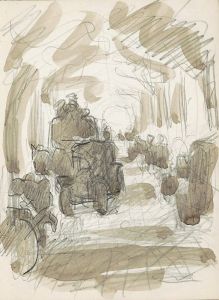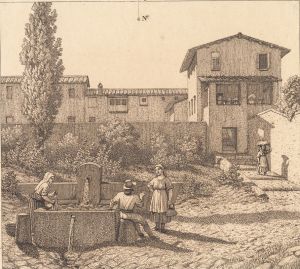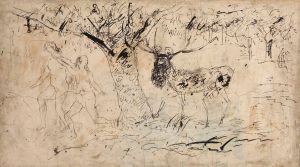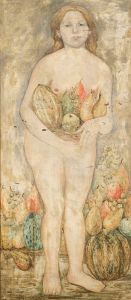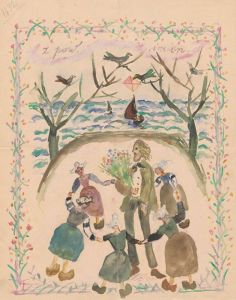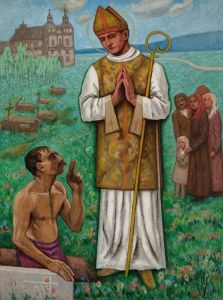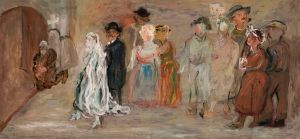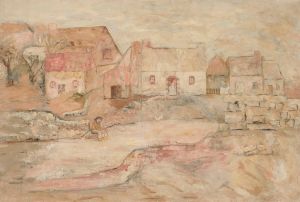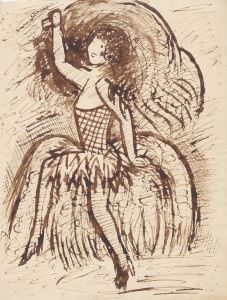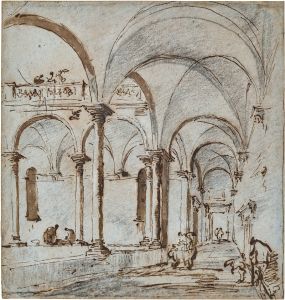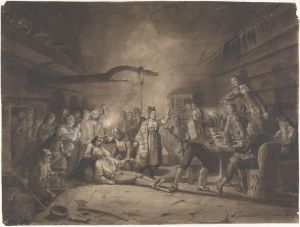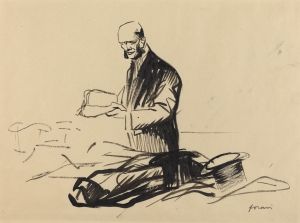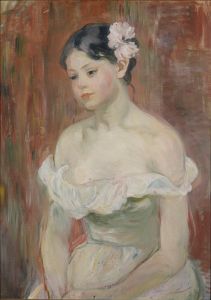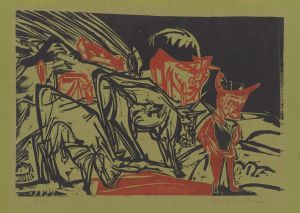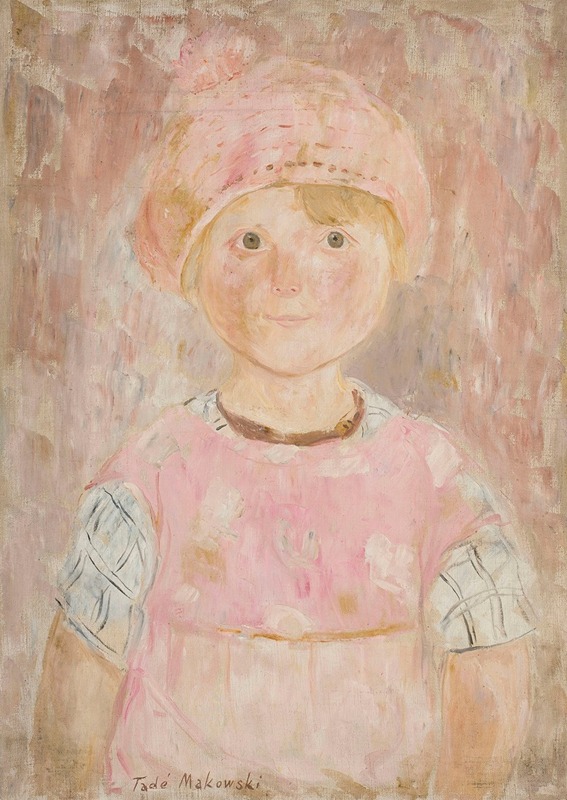
Dziewczynka w różowej sukience i czapce
A hand-painted replica of Tadeusz Makowski’s masterpiece Dziewczynka w różowej sukience i czapce, meticulously crafted by professional artists to capture the true essence of the original. Each piece is created with museum-quality canvas and rare mineral pigments, carefully painted by experienced artists with delicate brushstrokes and rich, layered colors to perfectly recreate the texture of the original artwork. Unlike machine-printed reproductions, this hand-painted version brings the painting to life, infused with the artist’s emotions and skill in every stroke. Whether for personal collection or home decoration, it instantly elevates the artistic atmosphere of any space.
Tadeusz Makowski was a Polish painter known for his unique style that combined elements of folk art, symbolism, and modernism. Born on January 29, 1882, in Oświęcim, Poland, Makowski initially studied classical philology at the Jagiellonian University in Kraków before turning to art. He later attended the Academy of Fine Arts in Kraków, where he studied under Józef Mehoffer and Jan Stanisławski, two prominent figures in Polish art.
Makowski moved to Paris in 1908, where he became part of the vibrant artistic community. Influenced by the works of Paul Cézanne and the burgeoning Cubist movement, Makowski began to develop his own distinctive style. Over time, his work evolved to incorporate more whimsical and childlike elements, often featuring children as subjects, which became a hallmark of his artistic output.
"Dziewczynka w różowej sukience i czapce" (translated as "Girl in a Pink Dress and Hat") is one of Makowski's notable works. This painting exemplifies his fascination with childhood innocence and simplicity. Makowski often depicted children in his paintings, capturing their essence with a blend of realism and stylized abstraction. His use of color, form, and composition in this painting reflects his interest in both modernist techniques and traditional folk art.
The painting portrays a young girl dressed in a pink dress and hat, set against a simple background that emphasizes the subject. Makowski's use of soft, muted colors and gentle brushstrokes creates a serene and contemplative atmosphere. The girl's expression is calm and introspective, inviting viewers to ponder her thoughts and emotions. This focus on the inner world of children is a recurring theme in Makowski's work, highlighting his sensitivity to the nuances of childhood experience.
Makowski's style is characterized by a synthesis of various influences, including Cubism, which is evident in the geometric simplification of forms, and the Polish folk art tradition, which can be seen in the decorative elements and vibrant colors. His ability to blend these diverse influences into a cohesive and personal style is one of the reasons his work remains significant in the history of Polish art.
Throughout his career, Makowski exhibited his work in various prestigious venues, both in France and Poland. His paintings were well-received for their originality and emotional depth. Despite spending much of his life in France, Makowski maintained strong ties to his Polish heritage, which is reflected in the themes and motifs present in his work.
Tadeusz Makowski passed away on November 1, 1932, in Paris, leaving behind a rich legacy of paintings that continue to be celebrated for their unique blend of modernist innovation and traditional charm. His work, including "Dziewczynka w różowej sukience i czapce," remains an important part of Polish cultural heritage and is studied for its contribution to the development of 20th-century art.
Makowski's paintings are held in various collections and museums, where they continue to be appreciated by art enthusiasts and scholars alike. His ability to capture the essence of childhood with such depth and simplicity ensures that his work remains timeless and relevant, resonating with audiences across generations.





